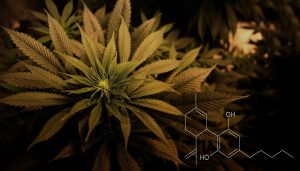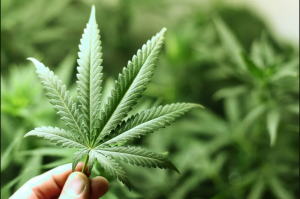A historic study from Israel has reported the predominant therapeutic properties of the whole plant CBD-rich cannabis extricate when contrasted with single-molecule cannabidiol (CBD). Distributed in the journal Pharmacology and Pharmacy (Feb. 2015), the article straightforwardly difficulties one of the untouchable relics of Big Pharma and the clinical mechanical complex—the idea that “crude” plant arrangements are innately second rate and less compelling than pure, single-molecule compounds. Titled ” Overcoming the Bell-Shaped Dose-Response of Cannabidiol by Using Cannabis Extract Enriched in Cannabidiol” the article is even more vital given the commitment of co-writer Lumir Hanus, who was instrumental in the discovery of anandamide, the endogenous cannabinoid compound originally distinguished in the mammalian cerebrum in 1992.

Hanus and two Israeli associates from the Hebrew University of Jerusalem reviewed the logical writing and noticed that during the previous fifteen years various preclinical investigations had concentrated on the anti-inflammatory impacts of pure, single-molecule CBD in creature models of different pathologies, including rheumatoid joint pain, inflammatory entrail disease, numerous sclerosis, and diabetes. These investigations demonstrated that the administration of pure, single-molecule CBD brought about a bell-shaped dose-response bend, implying that when the measure of CBD surpassed a specific point its therapeutic effect declined drastically. “Healing was possibly observed when CBD was given inside a constrained dose extend, though no gainful impact was accomplished at either lower or higher doses,” the disease observed. This attribute of single-molecule CBD—showed as a bell-shaped dose-response—forces genuine deterrents that limit its value in a clinical setting.

The Israeli group tried to decide if the administration of a whole plant CBD-rich extract would likewise create a bell-shaped dose-response bend when administered to mice. Or then again would cannabidiol extracted from CBD-rich Cannabis stay away from this risk? “The point of the current study,” the creators clarified, “was to discover a CBD source that could wipe out the bell-shaped dose-response of purged CBD.” The researchers got a CBD-rich strain called “Avidekel” from Tikkun Olam, an Israeli clinical maryjane maker. Alluded to as “clone 202” in this study, Avidekel has scarcely any THC and in this way isn’t intoxicating. The beginnings of Avidekel can be followed to Spain, where reproducers built up a few phenotypes of “Cannatonic” (as in “cannabis tonic”), including a strain that estimates near 20 percent CBD by dry load with practically no intoxicating fixings. (A similar high-yielding CBD-prevailing strain is known as “ACDC” in California.)
The Israeli analysts extracted CBD-rich oil from clone 202. The extract—comprising of 17.9 percent CBD, 1.1 percent THC, 1.1 percent cannabichromene (CBC), 0.2 percent cannabigerol (CBG), and “traces” of cannabinol (CBN) and cannabivarol (CBDV)— was given to mice to assess its anti-inflammatory and painkilling impact. For near purposes, the researchers administered pure CBD to another gathering of mice and surveyed its anti-inflammatory and pain relieving properties. They additionally contrasted the degree with which single-molecule CBD and whole plant CBD restrained the creation of tumor necrosis factor alpha (TNFa), a fundamental inflammatory flagging molecule. Dysregulation of TNF-alpha creation has been embroiled in a few diseases including cancer, Alzheimer’s, clinical depression, and irritable bowel syndrome. The pure CBD tests affirmed the discoveries of before preclinical examination. By and by, single-molecule CBD administration produced a bell-shaped dose-response bend with a limited therapeutic window.
In any case, an alternate dose response design was observed when the clone 202 extract was administered to mice. As opposed to indicating a bell-shaped bend, where a therapeutic impact must be accomplished at a specific convergence of pure CBD, the whole plant CBD-rich extract caused an immediate, dose-subordinate restraint of pain, irritation, and TNFa creation. “As a conspicuous difference to refined CBD,” the Israeli group announced, “the clone extract… gave an unmistakable connection between’s the anti-inflammatory and anti-nociceptive responses and the dose, with expanding responses after expanding doses, which makes this plant medication perfect for clinical uses.”
In addition, the Israeli scientists found that a modest quantity of CBD in the clone extract was required for huge pain alleviation contrasted with the a lot bigger measure of pure CBD required to accomplish a similar pain relieving impact. And though pure, single-molecule CBD accelerated a sensational drop in efficacy if in excess of a particular dose was administered, an “overdose” of whole plant CBD-rich extract didn’t subvert its therapeutic strength. At the point when more noteworthy than an ideal dose of the clone 202 oil was administered, its viability leveled off, recommending that a therapeutic plateau had been reached.
CONCLUSION:
The study shoes that although the Pharma industry may sell Single Compound CBD by labeling it as 100% pure and potent, same is not the case. Single compound CBD has a bell-shaped effect, i.e. with increase in dosage the benefits increase initially but then they drastically fall. Although same is not the case for whole plant CBD or full spectrum CBD, as in that case, the results increase with dosage but after a point achieve, what is called the medical plateau i.e. benefits then stop increasing. This is why whole plant CBD is better for medical usage or similar purposes. Its anti-inflammatory properties are more potent than single compound CBD.